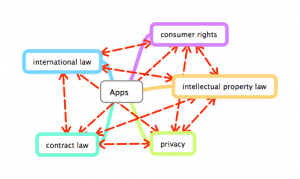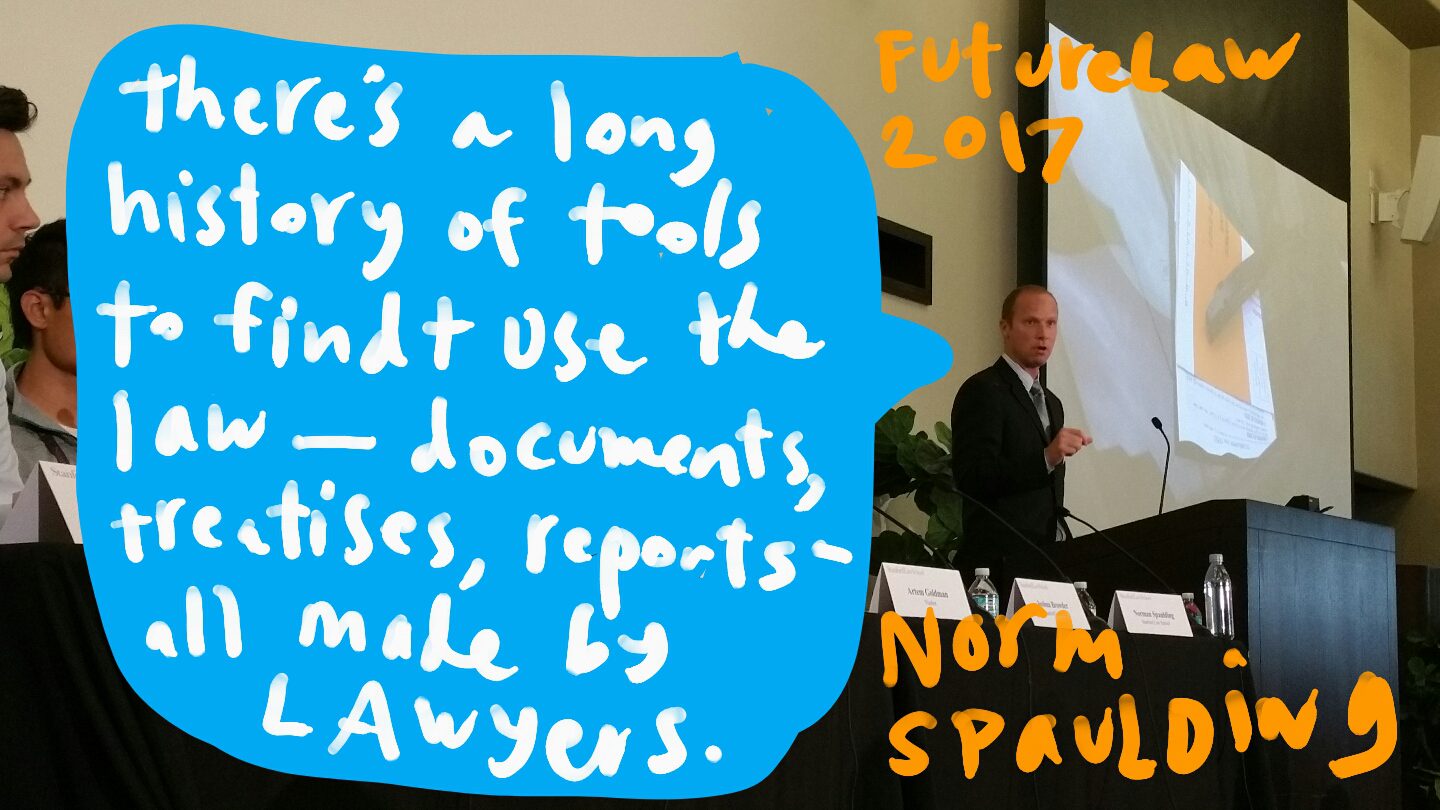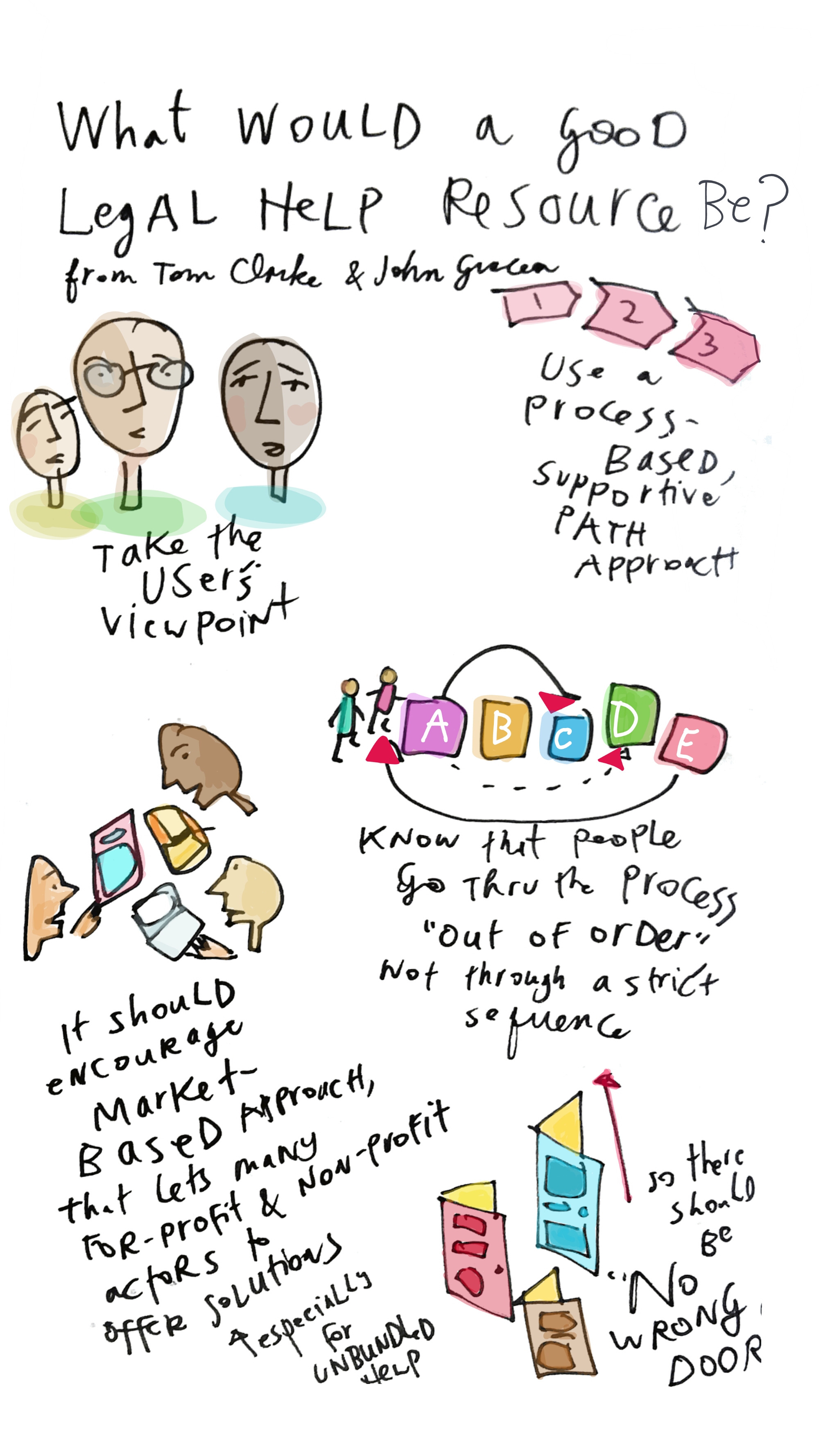Law as an app – technology in legal education » VoxPopuLII.
Christine Kirchberger & Pam Storr offer a great overview of where ‘apps’ (as conceived of now — and as they may develop in coming years) may play a role in giving lawyers more fluid working experiences, law students more interactive education, and general consumers direct access to the law they care about.
Their article also does a great job at laying out Key User Research Insights into how law students want to be learning with tech — and spelling out some possible models that lawyer-designers should be building upon.
They focus in on the potential for pushing forward certain types of legal ed outcomes:
- managing risks is something that practicing lawyers and other legal service professionals must do on a daily basis. Law is not only about applying legal rules but also about weighing options, estimating possible outcomes and deciding upon which risks to accept. Legal education has not traditionally included this in the curriculum, and students have arguably very little experience of such training in their studies.
- interaction between different areas of law is often hard to incorporate in legal studies, which follow a block or module structure. Each course provides students with in-depth knowledge of that particular legal area. However, the interaction between such modules is lacking, with teachers often unaware of the content of preceding or succeeding courses. For students, a problem with this module structure can be that they forget the content of a course studied at an earlier stage in their education.
- problem-based learning is generally encouraged and applied in legal education. However, most problem-based learning (PBL) is reactive, asking students to evaluate the legal consequences of a scenario that has already played out, instead of training students purely in after-the-fact solutions, in other words “clearing up the legal mess.” PBL should be made more proactive, aiming to train students in identifying and counteracting problems before they arise. This can also be viewed as an implementation of the first aspect, managing risks.
After setting out these ideal outcomes, they explore what the current state of legal apps are — and what the future could look like. One possible way would be to have apps be the links and bridges between students’ various classes — which right now are taught like blocks rather than like a fluid whole.
Legal education, as mentioned, is traditionally taught in blocks or modules, with very few references and links between them. This setup clearly has its benefits, not least logistically. There are clear arguments in favor of such an approach; planning and studying becomes easier for teachers and students alike, time limitations mean that implementing an approach that makes connections between each subject is hard. This is where we believe that technology has the potential to play an important role. Technology is not bound to physical classrooms and attendance requirements of students or teachers. It has the ability to be accessed at a time of the student’s choosing, without placing additional demands on instructors.
A legal education app could provide the key in aiding students to make connections between their study areas; it could be made to fit alongside a law degree, assuming a student’s knowledge in sync with their level of study, by including content from both current and past courses. The app would offer an easy way to implement an interactive, problem-based learning approach. It could provide additional content, quizzes, exercises, social media functions etc. complementing the education and enabling a holistic perspective.
Another insight they offer: law students may have to use the mental model of an interactive app (rather than a linear text approach) to analyze the law and consider how best to represent, analyze, and communicate the law to clients. Actually building an app could be a terrific learning exercise in the law school classroom.
In the exercise, students would look at law from a different perspective, i.e. how legal regulations affect the individual or organization. Going away from a linear text approach, students would have to translate law into a format that users or apps can read. In other words, law would have to suit the user/app, and not the other way around. Students would, therefore, have to go beyond text and translate rules into flowcharts, diagrams, mind maps and other visual tools in order for the app to be able to follow the law’s instructions.
Implementing legal rules into technology, therefore, not only encourages students to think proactively but it also motivates them to identify solutions for the application of the law and how rules could be transformed into practice. From a pedagogical point of view the exercise would allow the students to think about different aspects of law beyond the traditional case or contract. It would also encourage a wider viewpoint of law as a tool in society.
They call out the current model of using tech in legal study, which does seem to fall short of the model they’re advocating:
Legal apps have already been introduced to help lawyers study for qualifying exams, e.g. BarMax. (These are often, however, still very topic-specific.) Implementing the same kind of thinking at the educational level would start to prepare students for their future workplace, allowing them to be better prepared for helping clients with real-world scenarios dealing with complex and interrelating legal issues. If students begin such thinking at the beginning of their legal studies, it becomes normal, arguably allowing for better educated graduates.
This last approach is perhaps a little future-oriented (although not as much as, for example, grading by technology), and it is of course not easy to implement at the university level; academics must work together with app developers to produce a tool of real value to students. However, even a slimmed-down version of such an app can be a tool for helping students prepare for exams, test their knowledge of legal areas, or simply make sure that they have understood concepts covered in teaching. Some examples of such implementations in legal education are shown here
Some final notes: the article calls out how this may be done — perhaps through reformed curriculum, in which professors teach students how to build apps, perhaps through competitions or hackathons that push students to learn on their own.
Technical assistance is of importance, in order for students to know what aspects to take into account and what schematics developers need in order to be able to create an app. The exercise could be set up as a competition (Georgetown Law School – Iron Tech Lawyer) with an expert jury consisting of practicing lawyers and developers.
And perhaps just having students analyze apps could be a first step:
The students would –from the perspective of their expert area–firstly investigate possible legal issues with a specific gaming app, for example. They would analyze the application of the rules and norms within their field and identify potential conflicts or loopholes within these rules. Their investigation would include testing the app itself, as well as looking at possible end-user agreements and other applicable contractual agreements between the user, the app store and the developer of the app.
The next step would be to identify and discuss possible overlaps, discrepancies and conflicts between the different areas of law in relation to the app. The exercise should result in a written and/or oral report of the different legal issues involved and solutions to potential conflicts between the law and the app.
Adding another layer of real-life scenario, each group could be asked to present their findings to an imaginative client who is the producer of the app. This simulation would allow the students not only to develop a legal analysis based on correlating fields of law but also to present the analysis to non-lawyers, translating legal jargon into understandable everyday language.
The exercise–analyzing an existing app–very much fits into the idea often conveyed in legal education that law is applied after an incident occurs. In order to add a level of proactivity, students could be asked to analyze an app under production, before it is launched. This would guarantee more proactive thinking by the students asking them to foresee potential conflicts and avoid them, rather than discussing legal issues after they have arisen.



